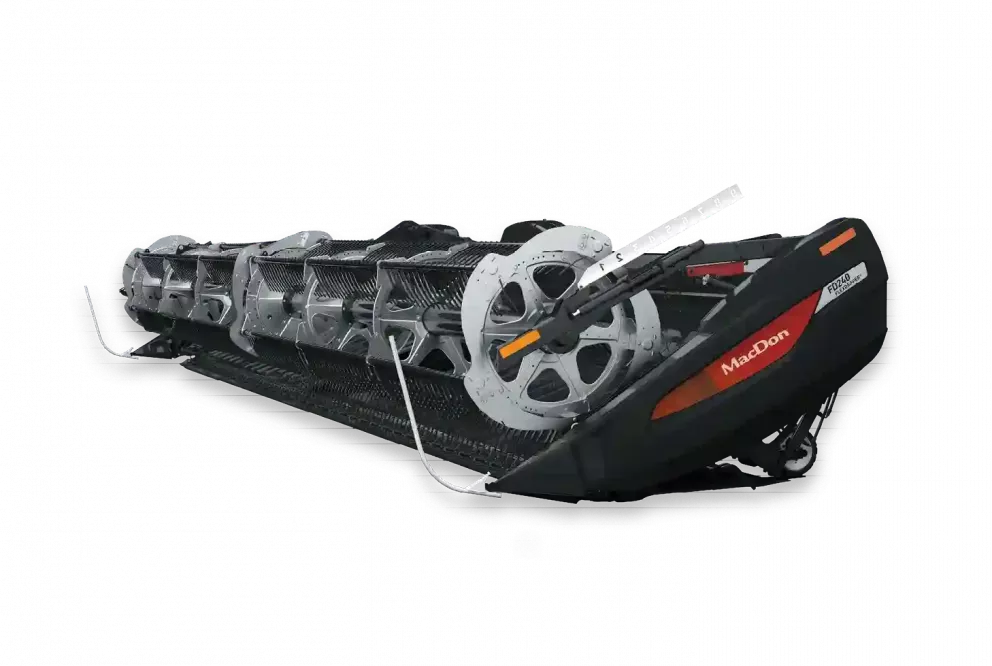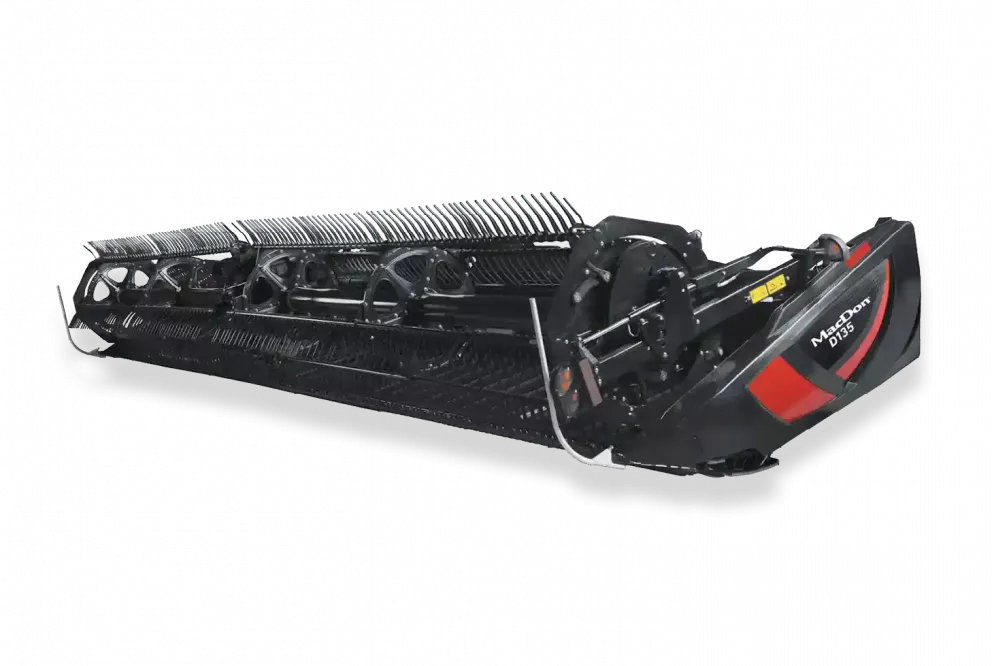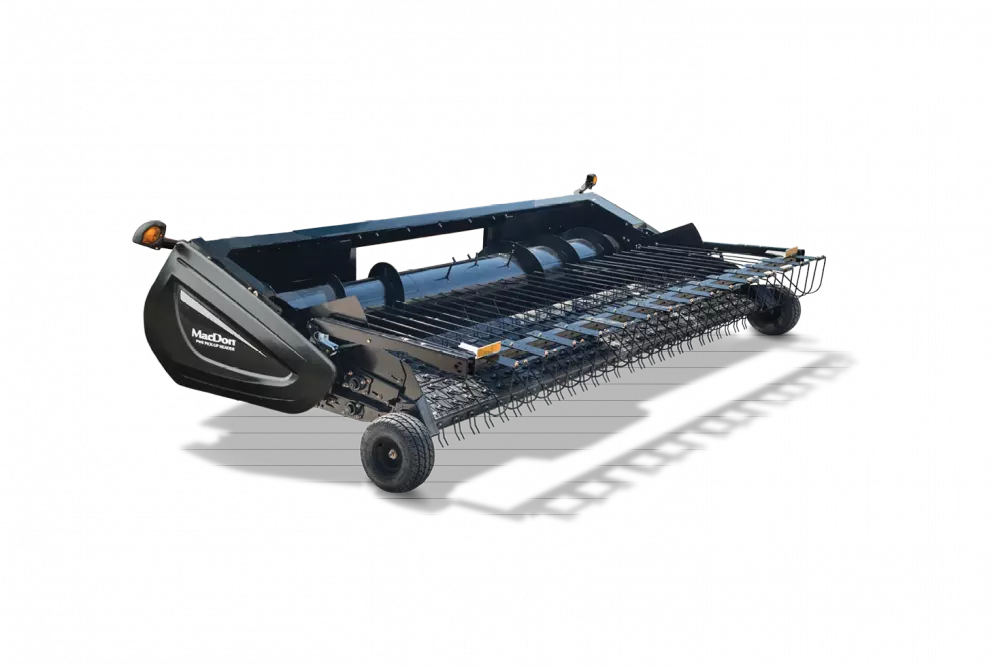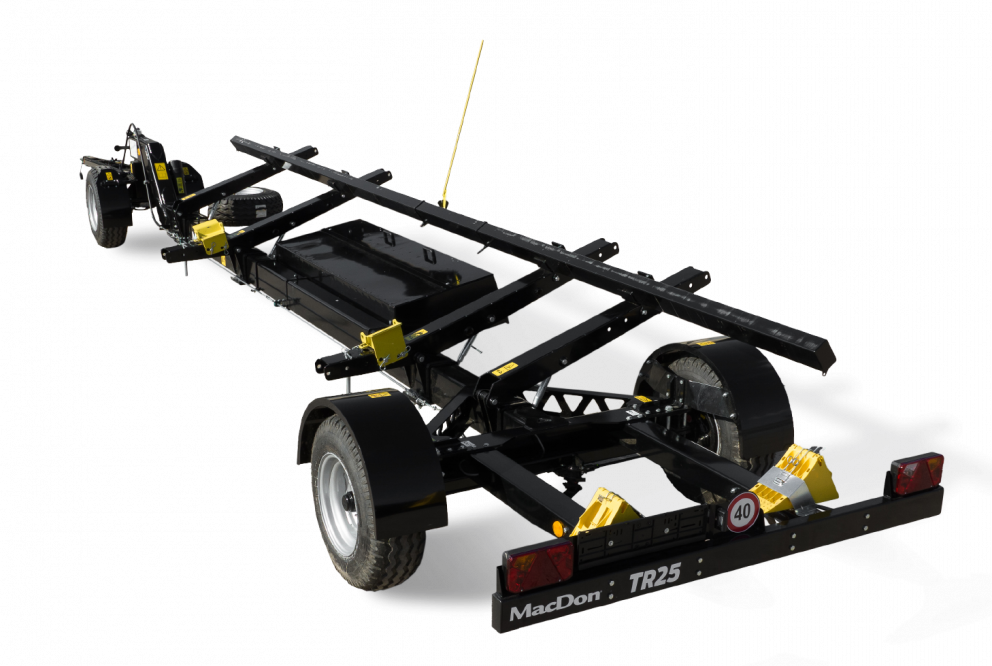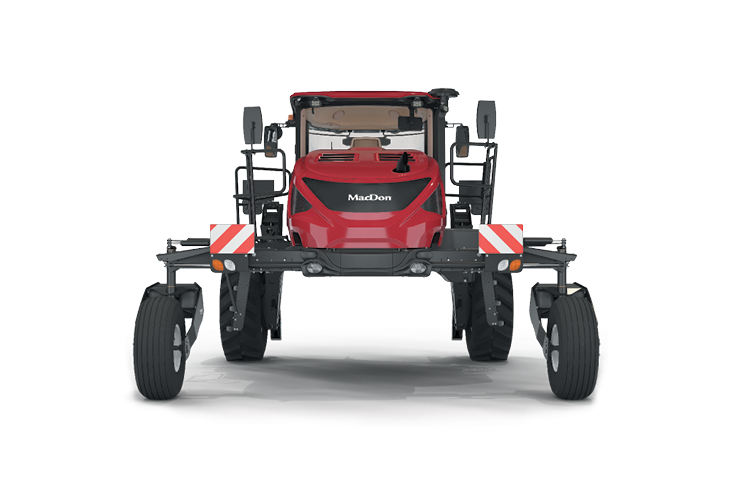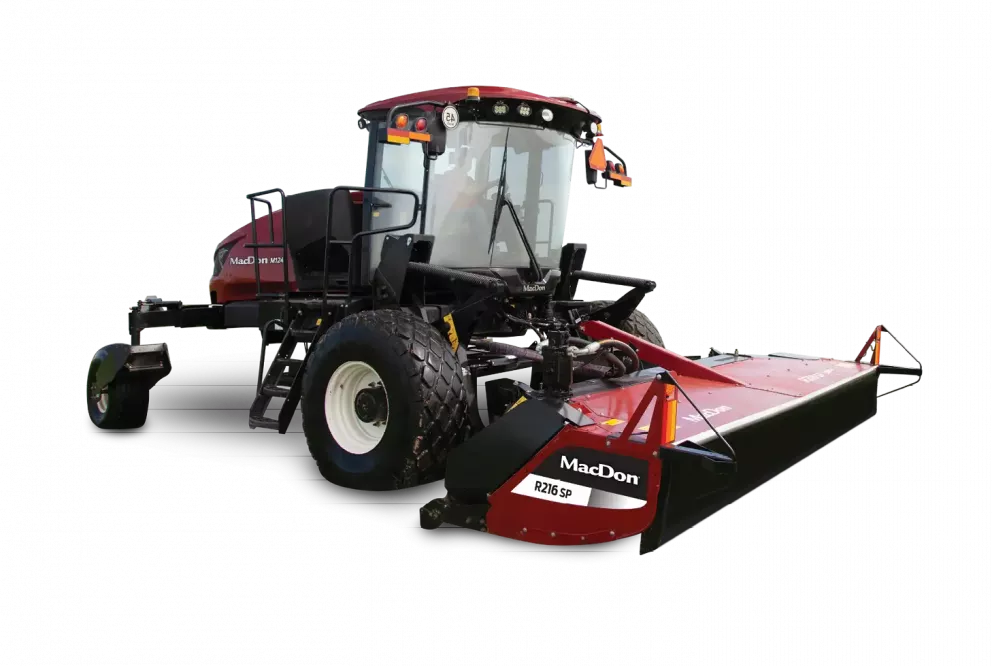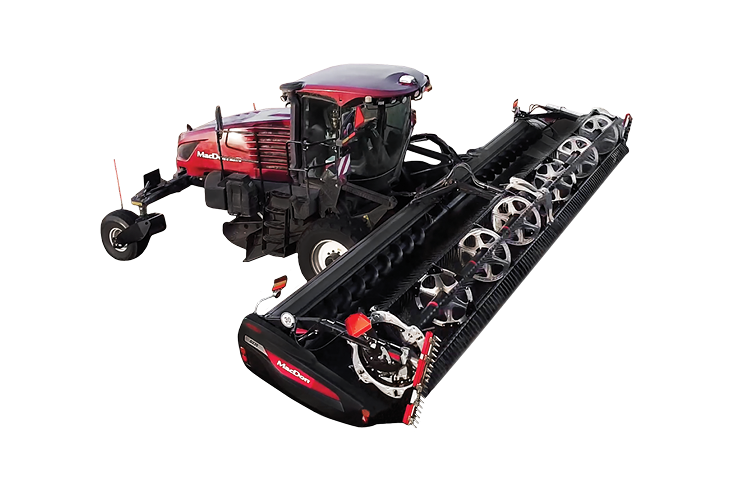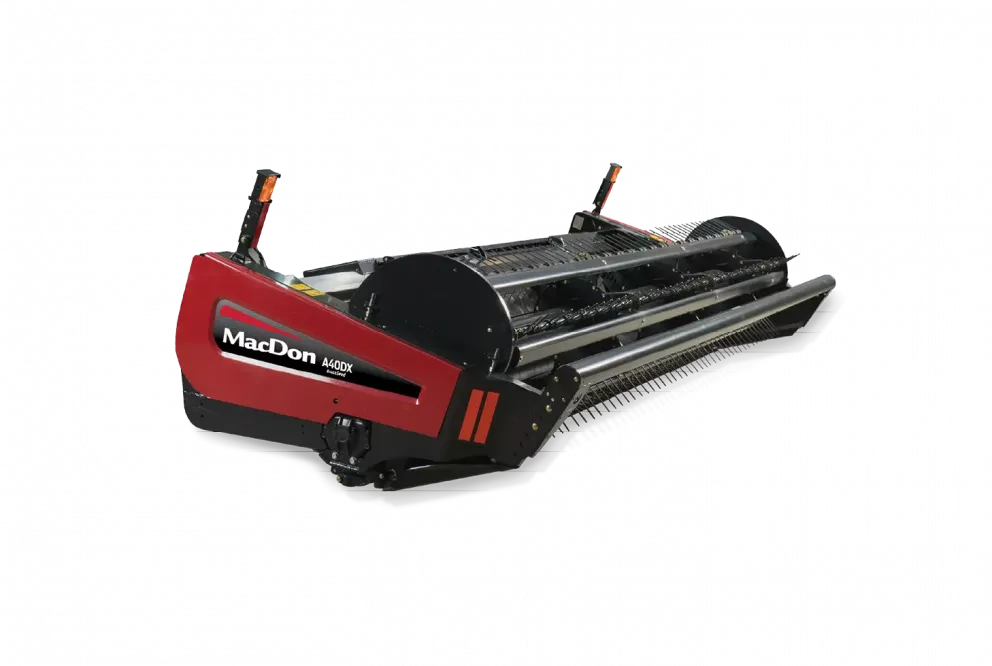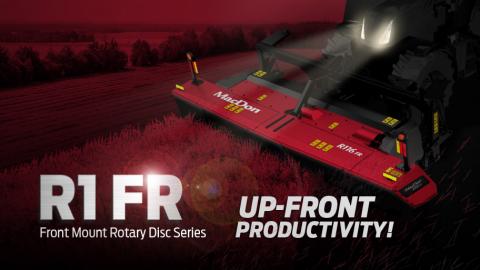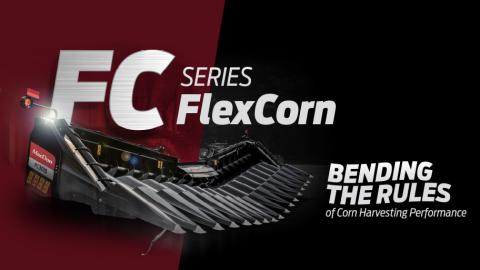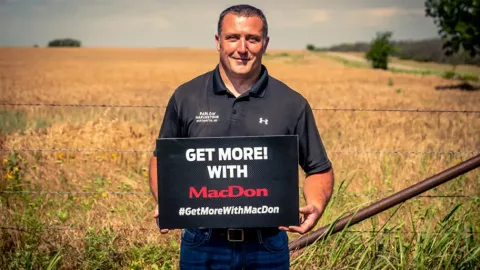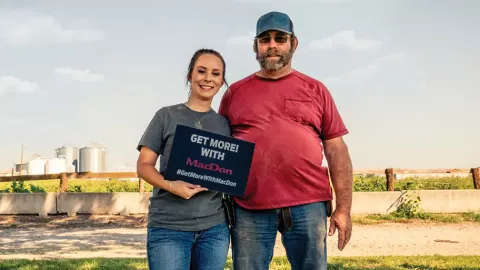Of hate, love and soybeans
MacDon’s FlexDraper® was born in the soybean fields of South Dakota.
IF IT WASN’T FOR MACDON I’D STILL BE OUT HERE ON MY OWN, UPSET AND FRUSTRATED.
Farmers looking for a better way to harvest their soybeans were the ones responsible for pushing MacDon to pursue a flexible draper, and no farmer championed the idea more than Bruce Nelson of Clark, South Dakota.
“You’ve got to understand how much I hated flex heads. I just absolutely detested them,” recalls Nelson about what started him looking at his MacDon draper header as a possible solution for harvesting his soybeans. Nelson, who farms about 4,800 acres of corn, wheat and soybeans, said that his frustration with his flex heads lead him to think that the solution lay in his MacDon draper header, a header that he just loved to use.
“In this area our beans tend to be short, and the flex heads just wouldn’t cut them off properly – just a real raggy job. The reel wouldn’t work right because it was in the way of the auger so we were shelling the beans and having to run slow. Even though we had this big combine with a 30' head on, we just couldn’t utilize our capacity. It became a chore, a job where you hated to go to the field in the morning, because it was just another day of doing a job that you weren’t proud of.”
Nelson remembers that his neighbors shared his irritation with the flex heads; regardless of color they were all having the same experience.
“We were always trying stuff with our flex heads to try to improve them like trying different sickle combinations. Initially we would be excited to go to the fields to see if anything had changed, but we were always disappointed.”
Then Nelson had a brain wave. Why not try his MacDon 962 Draper Header, which performed so well in his wheat, on his soybeans. He already knew that the MacDon draper was great for cutting low and feeding the crop gently into his combine.
“I can remember to this day the first time I took it to the field, just how much cleaner the cut was, how there was no shelling and how it just fed fantastically. Unfortunately, we just couldn’t keep it out of the dirt. But there were enough good things going on there that made me believe it would work.”
That’s when Nelson started badgering MacDon to think about developing a flexible draper platform.
“I really don’t think they took me seriously at first, at least until I cut the guard bar off my own header with a torch to see if I could make this thing work by myself. Once they saw that this crazy guy is serious, it probably convinced them that there might be a market out there for these after all.”
When MacDon finally brought around a prototype for him to test on his operation, Nelson says that he was completely surprised by the solution that MacDon’s engineers had come up with.
“I’ve always been impressed by MacDon and how clever these guys are and the many neat ideas they come out with – easier, more efficient ways of doing stuff. But if they had told me how they were going to end up, I would never have believed them. I would have never thought this flex draper thing would work the way it does by hinging the three platforms.”
Once he was able to get it out in the field, Nelson says that he quickly became a fan of the unique design.
“It was different than I imagined, but the job it did was everything I had hoped for; much easier and less fatiguing to run. We were also 20% wider right away, and were able to operate at the same speed, if not more. More important, the cut and the job was significantly better with much less shatter than a flex head running at the same speed.”
Nelson says that the biggest difference has been in how he now thinks about harvesting his soybeans. For him it’s transformed from a job that he hated to one that he really enjoys.
“It’s truly been a life changing deal with these flex drapers. Now, when I look back at the end of the day at this big area I’ve covered, and the beans I’ve cut look beautiful, and I’m not dead tired because I’ve not been on the edge of my seat all day, well, it’s very gratifying.”
And Nelson is quick to add that he has a lot of gratitude to MacDon for making days like that possible, as well as for making it possible to now do all of his cutting, wheat and soybeans, with just one header.
“If it wasn’t for MacDon I’d still be out here on my own, upset and frustrated and trying to make something work by myself. In fact, the flex draper concept would have never happened without MacDon. The majors would never have invested in this idea. I cannot begin to fathom the trust that was put into their engineers, and people like myself, to actually pursue this concept.”
